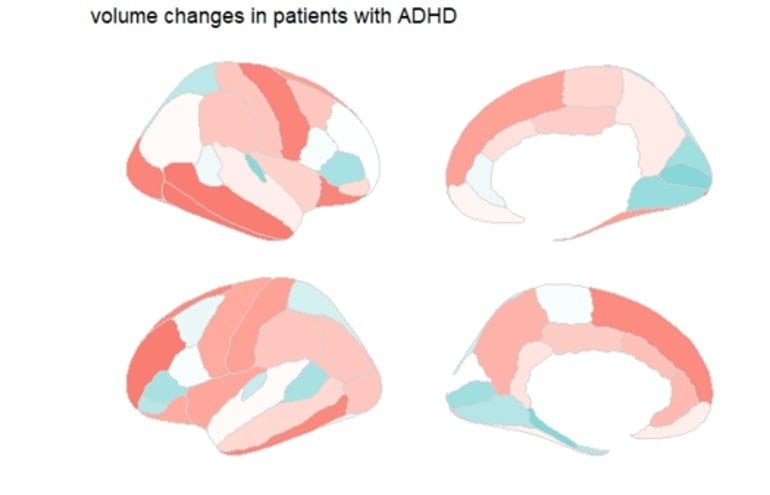summary: Researchers have recognized particular neurological biomarkers for ADHD in the mind. The look at printed these with ADHD had abnormal connectivity in brain areas linked to reminiscence processing and auditory processing, and thinning of the mind's cortex.
source: RSNA
Researchers examining the information from MRI tests on pretty much 8,000 babies have recognized biomarkers of attention-deficit/hyperactivity disease (ADHD) and a possible position for neuroimaging computer discovering to support with the analysis, medicine planning and surveillance of the disorder.
The results of the new look at should be presented subsequent week at the annual assembly of the Radiological Society of North the usa (RSNA).
based on the centers for sickness control and Prevention, ADHD is among the most ordinary neurodevelopmental disorders in childhood, affecting approximately 6 million American babies between the a while of 3 and 17 years.
children with the ailment might also have crisis paying attention and controlling impulsive behaviors, or they may be overly active. prognosis depends on a checklist completed by using the baby's caregiver to cost the presence of ADHD signs.
"There's a need for a more goal methodology for a more efficient and official prognosis," observed analyze co-creator Huang Lin, a submit-graduate researcher on the Yale college of medication in New Haven, Connecticut. "ADHD signs are often undiagnosed or misdiagnosed since the evaluation is subjective."
The researchers used MRI information from the Adolescent mind Cognitive development (ABCD) look at, the greatest lengthy-time period analyze of mind building and child fitness in the u.s.. The ABCD study involves eleven,878 babies aged 9-10 years from 21 centers throughout the nation to signify the sociodemographic range in the U.S.
"The demographics of our group reflect the U.S. inhabitants, making our results clinically applicable to the widely wide-spread population," Lin observed.
After exclusions, Lin's analyze neighborhood blanketed 7,805 patients, together with 1,798 diagnosed with ADHD, all of whom underwent structural MRI scans, diffusion tensor imaging and resting-state purposeful MRI.
The researchers carried out a statistical evaluation of the imaging statistics to determine the affiliation of ADHD with neuroimaging metrics together with mind quantity, surface area, white depend integrity and practical connectivity.
"We found adjustments in very nearly all of the areas of the mind we investigated," Lin pointed out. "The pervasiveness during the entire mind become unbelievable on the grounds that many prior stories have identified alterations in selective areas of the mind."
in the sufferers with ADHD, the researchers observed abnormal connectivity in the brain networks worried in reminiscence processing and auditory processing, a thinning of the mind cortex, and critical white rely microstructural alterations, notably within the frontal lobe of the mind.
"The frontal lobe is the area of the brain involved in governing impulsivity and attention or lack thereof—two of the leading symptoms of ADHD," Lin spoke of.
 quantity alterations in patients with ADHD. little ones with ADHD are likely to have decrease cortical quantity, principally in temporal and frontal lobes. credit score: RSNA and Huang Lin
quantity alterations in patients with ADHD. little ones with ADHD are likely to have decrease cortical quantity, principally in temporal and frontal lobes. credit score: RSNA and Huang Lin Lin observed MRI statistics was gigantic satisfactory that it may be used as input for laptop studying models to predict an ADHD prognosis. desktop discovering, a kind of artificial intelligence, makes it feasible to analyze large quantities of MRI information.
"Our analyze underscores that ADHD is a neurological disorder with neuro-structural and practical manifestations in the brain, no longer only a purely externalized conduct syndrome," she referred to.
Lin talked about the inhabitants-level records from the analyze offers reassurance that the MRI biomarkers supply an effective image of the brain.
"at times when a clinical prognosis is in doubt, aim brain MRI scans can assist to certainly establish affected children," Lin mentioned. "goal MRI biomarkers will also be used for decision making in ADHD diagnosis, remedy planning and remedy monitoring."
Senior creator Sam Payabvash, M.D., a neuroradiologist and assistant professor of radiology at the Yale school of drugs, referred to that fresh trials have pronounced microstructural changes according to therapy amongst ADHD infants.
"Our examine provides novel and multimodal neuroimaging biomarkers as expertise therapeutic pursuits in these babies," he referred to.
Co-authors are Stefan Haider, Clara Weber and Simone Kaltenhauser.
writer: Linda BrooksSource: RSNAContact: Linda Brooks – RSNAImage: The graphic is credited to RSNA and Huang Lin
original analysis: The findings can be introduced on the 108th Scientific meeting and Annual assembly of the Radiological Society of North the usa

Post a Comment